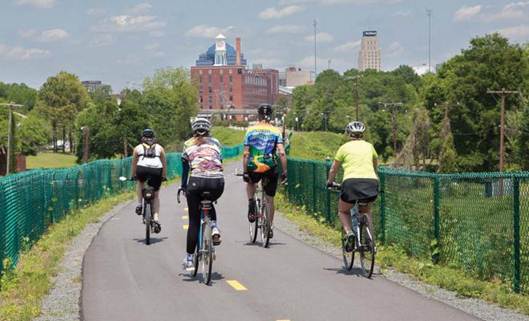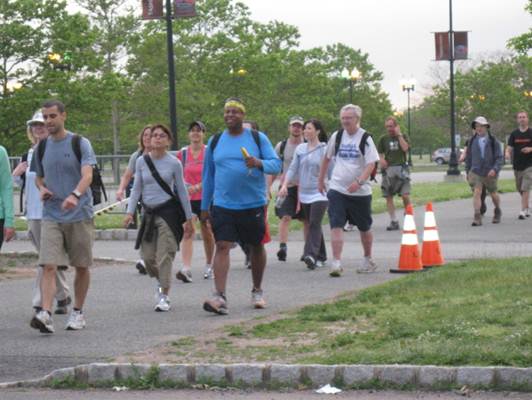In 1991, a group of civic planners from New
York City, Boston, and Washington DC came together with a concept for a
hard-surface trail system connecting their three cities.

The trail they envisioned would be open to
all muscle-powered travel and offer a traffic-free experience, connecting users
to a natural environment along the populous Eastern Seaboard. Since then, their
goal has expanded to include a 3,000-mile trail network running from Calais,
Maine, to Key West, Florida – 1,000 miles longer than the wilder Appalachian
Trail, which threads to the west and is roughly parallel to the proposed
circuit.

East
coast travel gets greener
The trail organization is called the East
Coast Greenway (ECG) and boasts almost 800 miles of official Greenway trail.
The ECG hosts many events, including the popular Week-a-Year fund-raising ride,
in which participants ride one section of the Greenway each year. The ECG also
recently hosted United States Surgeon General Regina M. Benjamin for an evening
walk on the North Carolina trail as a way to encourage physical activity among
all Americans.

The
trail organization is called the East Coast Greenway (ECG) and boasts almost
800 miles of official Greenway trail.
Dennis Markatos-Soriano, executive director
of the Greenway, sees the trail system as a “vertical park,” working to unite
communities and encouraging spiritual balance in urban settings. “There are
hundreds of noteworthy sections of trail,” he says. “You could walk along the
ocean in the Florida Keys, bike a forested route in Maine, or stroll along the
Staten Island Railroad Trail, taking in Manhattan’s skyline.” Markatos-Soriano
hopes to elevate the project’s mission to begin travel reform, and he notes
that bicycles increase the kind of freedom he hopes to achieve. “Families could
park their bikes more easily than cars and go to the Smithsonian museums.”